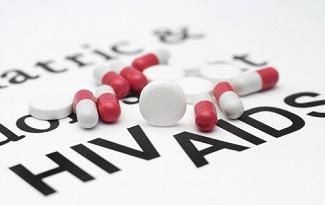Improving COVID-19 Outcomes in HIV Patients
A new study looks at this population and what factors affect outcomes, including diagnosis. This is significant not only for pandemic response, but also preparedness for vulnerable patient populations.

Year 2 of a pandemic and each day it seems as if we’re learning more about COVID-19. From transmission to immunity and long-haul COVID-19, our ability to understand the disease and our ultimate response is a critical aspect to future efforts. For many, the outcomes they may experience as a result of COVID-19 can vary due to pre-existing conditions, and this is an increasingly important aspect of better care.
For those living with HIV (human immunodeficiency virus), there can be several factors impacting the outcome of a SARS-CoV-2 infection. Understanding the dynamics of what factors affect such outcomes, including diagnosis, is an important aspect of not only pandemic response, but also preparedness for vulnerable patient populations moving forward.
A research paper recently published in The Lancet HIV addressed this very issue through a retrospective cohort study. The research team utilized data from March 1-December 15, 2020 in Catalonia via the PISCIS cohort, which is a cohort of people living with HIV in Spain.
PISCIS includes those 16-years and older receiving care for HIV across 16 hospitals. Utilizing diagnoses, hospital admissions, and mortality data within this cohort, the team also pulled recent sociodemographic characteristics such as age, sex, country of origin, etc. The authors noted the use of univariable and multivariable Cox regression models to test the factors that might be associated with SARS-CoV-2 diagnoses and severe outcomes in these patients.
The research team shared that they studied, “20,847 (72·8%) of 28 666 participants in the PISCIS cohort with PADRIS data; 13 142 people had HIV. 749 (5·7%) people with HIV were diagnosed with SARS-CoV-2: their median age was 43·5 years (IQR 37·0–52·7), 131 (17·5%) were female, and 618 (82·5%) were male. 103 people with HIV (13·8%) were hospitalized, seven (0·9%) admitted to intensive care, and 13 (1·7%) died. SARS-CoV-2 diagnosis was more common among migrants (adjusted hazard ratio 1·55, 95% CI 1·31–1·83), men who have sex with men (1·42, 1·09–1·86), and those with four or more chronic comorbidities (1·46, 1·09–1·97). Age at least 75 years (5·2, 1·8–15·3), non-Spanish origin (2·1, 1·3–3·4), and neuropsychiatric (1·69, 1·07–2·69), autoimmune disease (1·92, 1·14–3·23), respiratory disease (1·84, 1·09–3·09), and metabolic disease (2·59, 1·59–4·23) chronic comorbidities were associated with increased risk of severe outcomes.”
Ultimately this points to higher risk of severe outcomes from COVID-19 in those living with HIV who have detectable HIV levels (viraemia), chronic comorbidities, and in certain subpopulations. Interestingly, the authors also pointed to a study done within New York that looked at the rate of SARS-CoV-2 diagnosis and found it higher in those living with HIV than those living in the general population, but after adjusting for factors like age, sex, and region, they found that the relative risk between those of varied HIV status was nearly identical.
More and more, research such as this points to a critical need to address various populations and chronic health conditions that can impact COVID-19 outcomes in patients. Better outreach and community interventions are critical to address not only COVID-19, but also the gaps to diagnosis and care that may impact outcomes.
